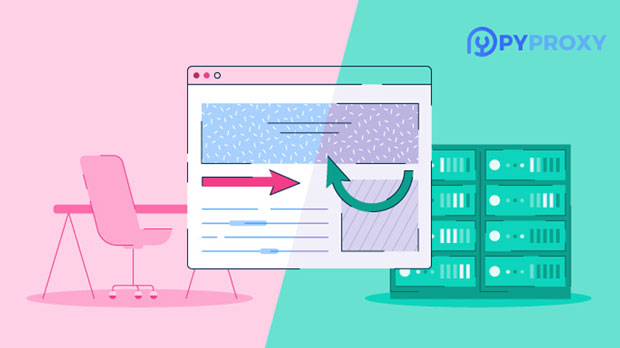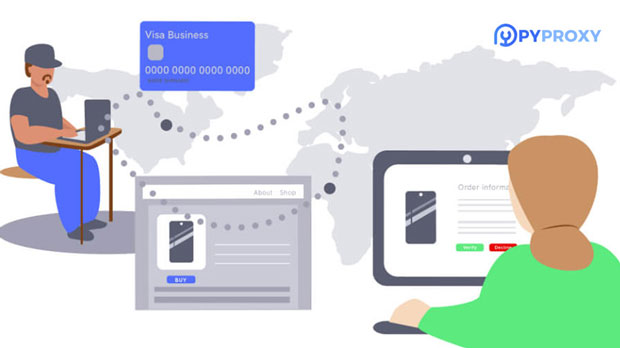In today's digital world, the use of mobile proxy ips has become increasingly prevalent, especially for tasks like web scraping, data gathering, and maintaining online anonymity. However, not all mobile proxy ips are created equal, and ensuring their stability and authenticity is crucial. A stable and genuine mobile proxy IP guarantees reliability, secure browsing, and consistent performance across tasks. This article explores how to assess whether a mobile proxy IP is stable and real, focusing on key factors like performance, geographic consistency, and security. By the end of this guide, readers will have the knowledge to identify high-quality mobile proxy IPs and avoid unreliable ones. Understanding the Importance of Stable and Genuine Mobile Proxy IPsMobile proxies are essential tools for tasks that require high anonymity and large-scale data collection. These proxies are sourced from mobile networks and allow users to connect through real phone numbers, making them less likely to be blocked or detected by websites compared to traditional proxies. Mobile proxies also provide a higher degree of geographic flexibility since mobile IP addresses are often distributed across various regions, making them ideal for accessing localized content.However, with the growing popularity of mobile proxies, many low-quality or unstable IPs have emerged, which can result in poor performance, frequent disconnects, and even blacklisting. Thus, distinguishing a stable and real mobile proxy from a fake one is crucial for anyone relying on these services. The following factors will help in determining the reliability of a mobile proxy IP.Key Factors to Evaluate a Mobile Proxy's Stability and Authenticity1. Performance TestingA reliable way to determine if a mobile proxy IP is stable and genuine is through performance testing. This includes measuring the speed, latency, and reliability of the IP under different conditions.- Speed: A real, stable mobile proxy should provide decent speed, with minimal interruptions. Test the speed of the proxy to see if it can handle tasks such as web scraping, streaming, or browsing without delays. Unstable mobile proxies often result in slower speeds and inconsistent connections, leading to poor user experience.- Latency: Latency refers to the time it takes for data to travel between the device and the proxy server. High latency often indicates a poor or unreliable proxy. A real mobile proxy should exhibit low latency, similar to a typical mobile connection. Excessive latency can disrupt tasks that require fast data transmission, such as web scraping or real-time services.- Reliability: Stability refers to the continuity of the proxy's performance over time. Regular disconnections or fluctuations in speed can indicate that the proxy is unstable. To test reliability, conduct long-term tests and observe whether the connection remains consistent over hours or days.2. Geographic ConsistencyOne significant advantage of mobile proxy IPs is their ability to simulate real user connections from various geographic locations. Genuine mobile proxy IPs should maintain geographic consistency, meaning they should consistently appear as if they originate from the same region over time. A mobile proxy IP's location should be aligned with its carrier's network, as this ensures that the proxy remains authentic. Frequent changes in location or erratic switching between countries could indicate that the proxy is being used by multiple users or that it is not genuinely linked to a mobile network.Furthermore, some websites track the geographic origin of IPs and will block or flag inconsistent proxy behavior. If the location of the IP changes too frequently, websites may detect it as suspicious, reducing its effectiveness.3. IP Rotation and Session HandlingIP rotation is an essential feature of many proxy services, where multiple IPs are used in quick succession to avoid detection. However, a stable and genuine mobile proxy should handle IP rotation and session persistence smoothly. When evaluating a mobile proxy, check how the IP rotation is implemented:- Smooth IP Rotation: A reliable mobile proxy rotates IPs without causing significant disruptions or errors. It should be able to handle requests that require multiple IPs, ensuring that users can continue their activities without encountering frequent blocks or CAPTCHAs.- Session Persistence: In some cases, maintaining a session over time is essential for certain tasks, such as logging into accounts or collecting data from dynamic websites. A genuine mobile proxy should allow for session persistence, meaning that users can keep the same IP for a specific task without disruptions. This is important for ensuring stable connections for long-running activities.4. Security FeaturesSecurity is another critical factor when evaluating mobile proxy IPs. A stable and real mobile proxy should offer strong encryption and other security features to ensure that the user's data and activities remain private. Look for the following security aspects:- HTTPS Support: The proxy should support secure connections using HTTPS. This ensures that data transmitted through the proxy is encrypted and secure, preventing third parties from intercepting sensitive information.- No DNS Leaks: DNS leaks occur when a proxy fails to route DNS requests properly, exposing the user's real IP address. A genuine mobile proxy should prevent DNS leaks, ensuring that all traffic is routed through the proxy server.- Data Protection: A mobile proxy service should prioritize user data protection by adhering to strict privacy policies. Ensure that the proxy service does not log user activity, as this could lead to potential breaches of privacy.5. Testing for Blocked IPsAnother way to evaluate the authenticity of a mobile proxy is by checking whether the IPs are blacklisted or flagged by websites. Genuine mobile proxies are less likely to be blacklisted, as they use real mobile connections that are harder to detect.To test this, try using the mobile proxy to access various websites. If the IP is consistently blocked or flagged, it may indicate that the proxy is not genuine. Many websites and services use blacklisting techniques to detect and block suspicious proxy activity. High-quality mobile proxies, however, should avoid being blacklisted, as they appear to be typical mobile users rather than proxy users.6. Customer Feedback and ReviewsFinally, one of the most effective ways to assess the quality of a mobile proxy IP is by reviewing customer feedback and reviews. Genuine mobile proxy providers will have transparent customer testimonials, case studies, and reviews available online. These reviews often provide valuable insights into the proxy’s performance, reliability, and support services.When researching customer feedback, pay attention to any recurring issues with stability, connection reliability, or performance. A lack of positive reviews or consistent complaints about poor performance may indicate that the provider’s mobile proxy IPs are not stable or real.Determining whether a mobile proxy IP is stable and genuine requires careful evaluation of several key factors, including performance testing, geographic consistency, IP rotation, security, blocked IPs, and customer feedback. By thoroughly assessing these elements, users can identify high-quality mobile proxy IPs that offer stable, reliable, and secure connections for their tasks. Ultimately, ensuring the authenticity and stability of a mobile proxy is crucial for achieving seamless and effective results in tasks like web scraping, data collection, and maintaining online anonymity.
Apr 18, 2025
![arrow]()




























































